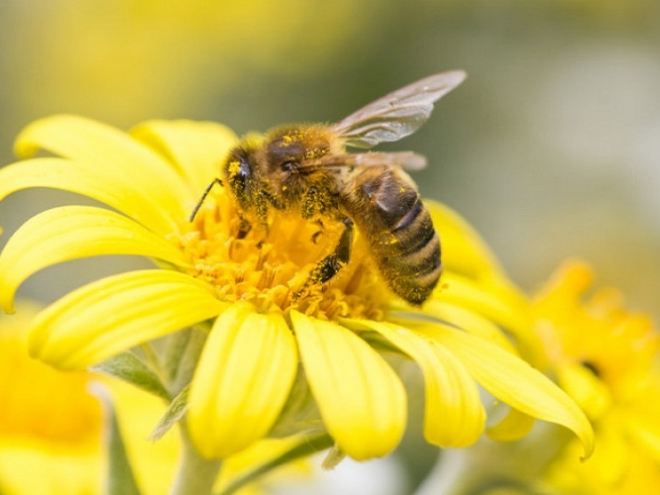Behavioral Neuroscience, lecture on Honey Bee Proboscis Extension Reflex- Sensory Input
Honey Bee Conditioned Drinking
V. Honey Bee Proboscis Extension Reflex- Sensory Input
A. Foraging for nectar and pollen requires sensory cues
1. floral “cues” aid in finding nectar/pollen
a. cues include: color, shape, texture, and odor
2. Odors are the most prominent cue
a. usually associated with nectar/pollen reward
3. Proboscis Reflex Extension is used to investigate olfactory learning
4. Is stimulated in 2 ways
a. -Via the antenna
b. -Via the proboscis itself
B. Sensory Input via Antenna
1. Odorants are detected at the antenna via placode sensilla (pore plate sensilla)
a. A sensillum is a chemosensory organ
b. Placode sensilla - oval shaped pores found on surface of antenna
c. Filled with sensillum lymph
i. Contains odorant binding proteins (OBP)
1) OBP transport of odorant molecules
2. Odorant molecules diffuse through sensillum lymph
a. to dendrites of the olfactory receptor neurons (ORN = sensory neurons)
i. OBP/odorant bind to olfactory receptor proteins (OR)
1) OR = 7-transmembrane protein
a) similar to many GPCR transmitter or hormone receptors
2) Functional receptor is heteromeric complex of OR
3) Co-receptor (AmOR2) is also widely expressed
b. ORN action potential signals antenna lobe (AL)
i. via the antennal nerve (made up of ORNs)
1) ~60,000 ORNs send signals
ii. AL compartmentalized into 165 spheroidal neuropil units called glomeruli
1) Different AL glomeruli correspond to an array of OR types
a) One-receptor/one-ORN/one glomerulus hypothesis for honeybees
i) 163 types of potentially functional OR, 165 glomeruli
c. ORN/sensory terminals release acetylcholine (ACh)
i. bind nicotinic ACh receptors (nAChRs) on glomerular local neurons (LN)
1) these LN (interneurons) connect different glomeruli
ii. binds nAChRs on projection neurons (PN)
1) relay information to Lateral horn (LH)
2) and to mushroom bodies (MB)
C. Sensory Input via the proboscis
1. important for Learning
a. rewarding vs aversive stimuli
i. nectar/pollen = rewarding
b. learn to associate odorants with reward
i. Odor = conditioned stimulus (CS)
ii. Sucrose (reward)= reinforcing unconditioned stimulus (US)
c. necessary for effective foraging
2. Proboscis contains olfactory and gustatory sucrose chemoreceptors (GRN)
a. activates GRN by sucrose tasting
b. release of ACh
3. GRN input from these sensory receptors travels to a single interneuron
a. in the subesophogeal ganglion (SEG) binds nAChR
b. the Ventral Unpaired Median neuron of the maxillary neuromere #1 (VUM-mx1)
i. Responds to both antenna and proboscis
4. VUM-mx1 projects 3 brain regions
a. Secretes Octopamine (OA)
i. olfactory pathways
ii. Binds to the octopamine receptor AmOA1
b. AL
c. Lip region of the Mushroom bodies (MB)
d. LH
